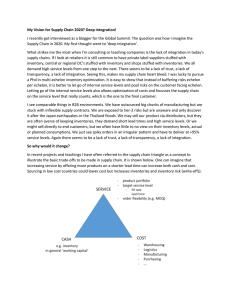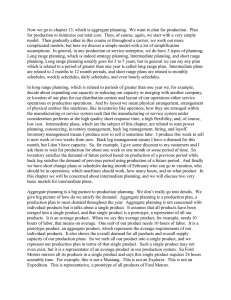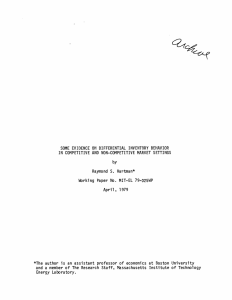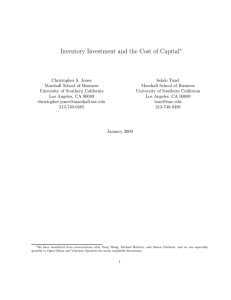556986aa673b8
advertisement
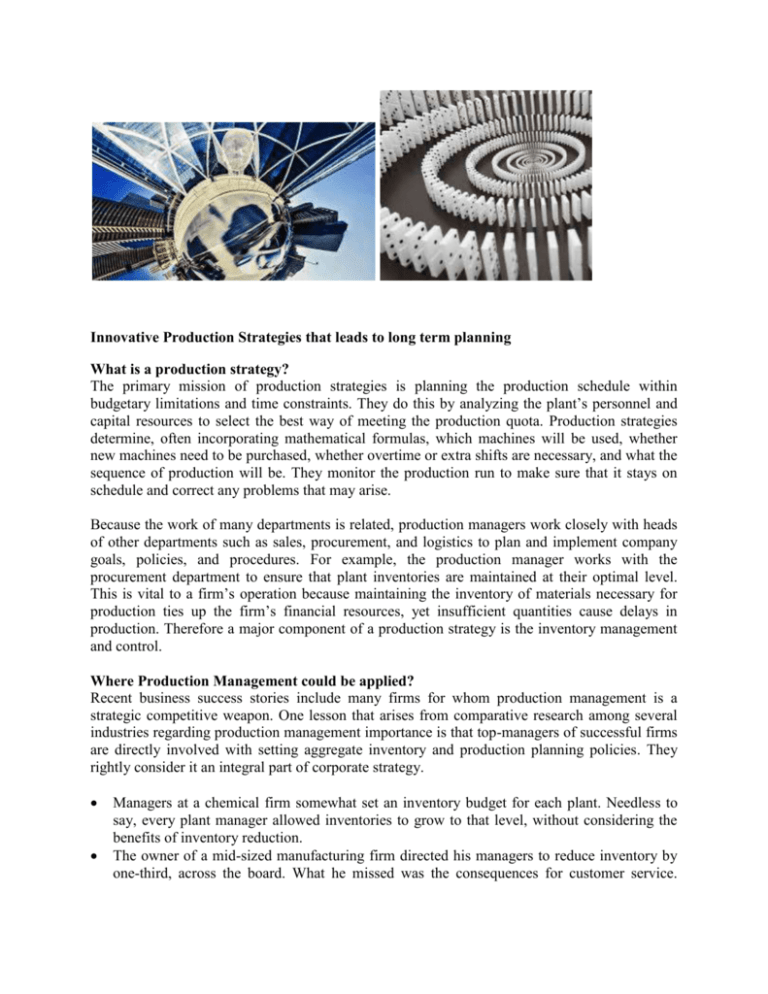
Innovative Production Strategies that leads to long term planning What is a production strategy? The primary mission of production strategies is planning the production schedule within budgetary limitations and time constraints. They do this by analyzing the plant’s personnel and capital resources to select the best way of meeting the production quota. Production strategies determine, often incorporating mathematical formulas, which machines will be used, whether new machines need to be purchased, whether overtime or extra shifts are necessary, and what the sequence of production will be. They monitor the production run to make sure that it stays on schedule and correct any problems that may arise. Because the work of many departments is related, production managers work closely with heads of other departments such as sales, procurement, and logistics to plan and implement company goals, policies, and procedures. For example, the production manager works with the procurement department to ensure that plant inventories are maintained at their optimal level. This is vital to a firm’s operation because maintaining the inventory of materials necessary for production ties up the firm’s financial resources, yet insufficient quantities cause delays in production. Therefore a major component of a production strategy is the inventory management and control. Where Production Management could be applied? Recent business success stories include many firms for whom production management is a strategic competitive weapon. One lesson that arises from comparative research among several industries regarding production management importance is that top-managers of successful firms are directly involved with setting aggregate inventory and production planning policies. They rightly consider it an integral part of corporate strategy. Managers at a chemical firm somewhat set an inventory budget for each plant. Needless to say, every plant manager allowed inventories to grow to that level, without considering the benefits of inventory reduction. The owner of a mid-sized manufacturing firm directed his managers to reduce inventory by one-third, across the board. What he missed was the consequences for customer service. Investigation revealed that inventories could, in fact, be reduced without sacrificing service, but by significantly less than one third. How decisions in a production context should be made? In this section a unified framework for production decision-making is provided. The framework applies across a variety of processes, but managers should emphasize different decisions, depending on the process type under consideration. In continuous process a paramount issue should be the coordination of items at a single bottleneck operation, to achieve high capacity utilization as possible. In contrast in assembly processes the primary concern should be the appropriate coordination of raw materials, components, and so forth, across multiple stages of production. Batch flow operations may have a single bottleneck, and thus managers should focus on managing that resource. Alternatively, they may have a strong similarity to assembly process so that material coordination should be the key management focus. Job shops tend to have moving bottlenecks, and often have few components and materials, so that the important issue is short-term scheduling. Strategic planning Strategic (or long-range) decisions of relevance to the production area (but with important interactions with other functional areas) included which products to produce, on which of the dimensions of cost, quality, delivery and flexibility to compete; where to locate facilities; what production equipment to use; and long-range choices concerning raw materials, energy and labor skills. Tactical planning Tactical (medium-range) plans, with a planning horizon from six months to two years into the future, take the basic physical production capacity constraints and projected demand pattern, established by a long-range plan, and ration available resources to meet demand as effectively and as profitable as possible. Even though basic production capacity is essentially fixed by longrange considerations, production capacity can be increased or decreased within limits in the medium term. A decision can be made to vary one or more of the following: the size of the work force, the amount of overtime worked, the number of shifts worked, the rate of production, the amount of inventory, the shipping modes and possibly the amount of sub contracting utilized by the company. These plans, in turn, constrain but provide stability to what can be done at the operational level. Operational planning Operational (short-term) activities provide the day-today flexibility needed to meet customer requirements on a daily basis within the guidelines established by the more aggregate plans discussed above. Short-range operating schedules take the orders directly from customers, or as generated by the inventory system and plan in detail how the products should be processed through a plant. In most cases detailed schedules are drawn up for one week, then one day and finally one shift in advance. The schedules involve the assignment of products to machines, the sequencing and routing of orders through the plant, the determination of replenishment quantities for each stock keeping unit and so on.





